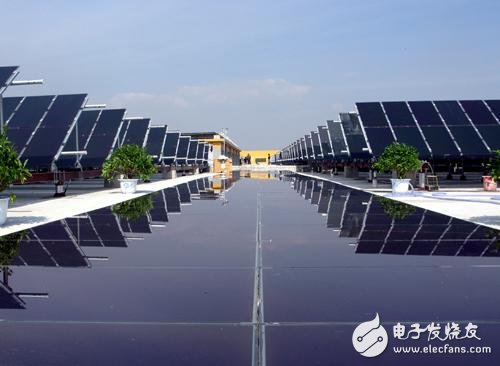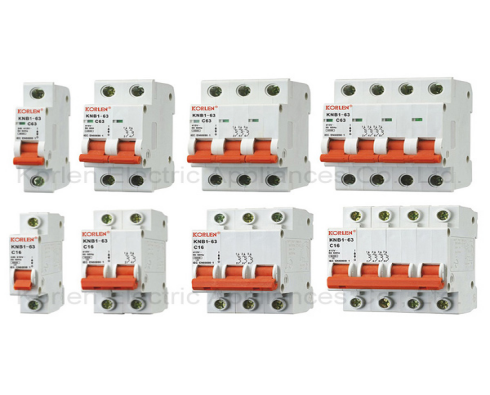Solar energy is the most important basic energy among various renewable energy sources. Biomass energy, wind energy, water energy, etc. all come from solar energy. A solar cell is a device that converts solar energy into electrical energy through the photovoltaic effect, and is an important form of utilizing solar energy.
At present, people divide the application technology of solar cells into crystalline silicon and thin film according to the selected semiconductor materials. Crystalline silicon solar cells dominate in large-scale applications and industrial production at this stage, but their high cost limits their development. Compared with other solar cells such as crystalline silicon, thin-film solar cells have the advantages of low production cost, low raw material consumption, and excellent low-light performance. With the shortage of energy in the world, thin-film solar cells, as a kind of photoelectric functional film, can effectively solve the problem of energy shortage, and are pollution-free. They can also realize the integration of photovoltaic buildings and are easy to promote in a large area.

Amorphous silicon thin film solar cell
The conversion efficiency of amorphous silicon thin-film solar cells is low, and the conversion efficiency in the laboratory is only 13%, but the process is mature, the cost is cheaper than crystalline silicon, the preparation is convenient, and it is suitable for large-scale production.
Amorphous silicon thin-film solar cells usually have a laminated structure. A transparent conductive film (transparentconductve oxide (TCO) layer, an amorphous silicon layer (a-Si layer) and a back electrode layer (Al / ZnO layer) are deposited on a glass substrate. , Where the amorphous silicon layer is deposited by magnetron sputtering.
Compared with single-crystal silicon solar cells, amorphous silicon thin films are a material that is very promising to greatly reduce the cost of solar cells. Amorphous silicon thin film solar cells have many advantages that make them an excellent photovoltaic thin film photovoltaic device. (1) The light absorption coefficient of amorphous silicon is large, so as a solar cell, the required thickness of the thin film is much smaller than that of other materials such as gallium arsenide; (2) relative to single crystal silicon, amorphous silicon thin film solar energy The battery manufacturing process is simple, and the energy consumption during the manufacturing process is low; (3) large area and continuous production can be realized; (4) glass or stainless steel and other materials can be used as a substrate, which is easy to reduce costs; (5) can be made into a stack Layer structure to improve efficiency.
But at the same time, there are still some problems to be solved in amorphous silicon thin film solar cells. (1) Due to the presence of the Staebler-Wronski effect, the amorphous silicon thin-film solar cell will decay in efficiency for a long time under sunlight, which will lead to a reduction in the efficiency of the entire cell; (2) The low deposition rate affects amorphous silicon Large-scale production of thin-film solar cells; (3) Subsequent processing difficulties, such as the processing of Ag electrodes; (4) There are a large number of impurities in the thin-film deposition process, such as O2, N2, C, etc., affecting the quality of the thin film and the battery stability.
The next research of amorphous silicon thin-film solar cells mainly has the following directions: one is the use of high-quality bottom battery i-layer materials; the second is the development of stacked structure batteries; the third is the development and production under the condition of ensuring efficiency Stacked amorphous silicon solar cell module technology; finally use cheap packaging materials to reduce costs.
Circuit Breaker is an electrical device used in an electrical panel that monitors and controls the amount of amperes (amps) being sent through the electrical wiring. Circuit breakers come in a variety of sizes. For instance, 10, 15 and 20 amp breakers are used for most power and lighting needs in the typical home. Some appliances and specialty items (washers, dryers, freezers, whirlpools, etc.) will require a larger circuit breaker to handle the electrical load required to run that appliance.
Circuit Breaker is composed of 4 parts, Ie. , the insulating case, operating mechanism, contact system and tripping device, featuring quick make and break and free trip. The types of common circuit breaker are: Miniature Circuit Breaker /MCB,Residual Current Circuit Breaker /RCCB,Leakage Circuit Breaker,RCBO, Moulded Case Circuit Breaker /MCCB. As a largest Circuit Breaker manufacturers in china, Korlen electrical produces Circuit Breaker more than 3 million monthly.

|
rame class |
63A |
|
Rated working voltage |
240V/415V |
|
Rated frequency |
50/60Hz |
|
Rated working current |
1, 3, 6, 10, 16, 20, 25, 32, 40, 50, 63A |
|
Making and breaking capacity |
6000A(6~40A), 4500A(50, 63A) |
|
Release type |
B, C, D |
|
Poles |
1, 2, 3, 4P |
|
Mechanical life |
20000 |
|
Electric life |
4000 |
If you have any questions,please contact with us directly,welcome to visit our factory.For inquly.please send mail directly to us.
Circuit Breaker
Low Voltage Breaker,Air Circuit Breakers,Earth Leakage Circuit Breaker,Vacuum Circuit Breaker,Circuit Breaker,Motor Breaker
Wenzhou Korlen Electric Appliances Co., Ltd. , https://www.korlenelectric.com